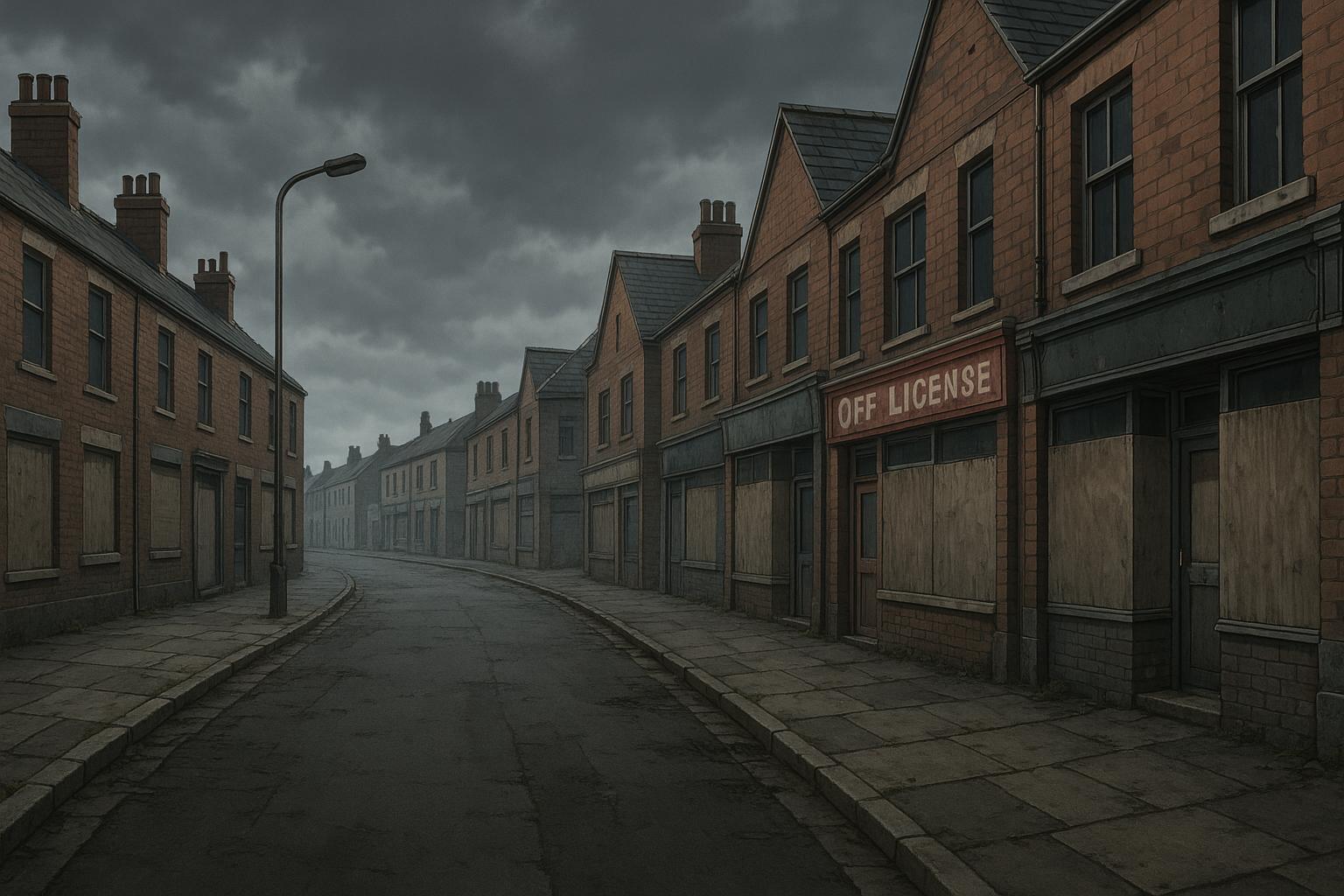The landscape of Britain is increasingly marred by the emergence of ghost towns, a phenomenon that evokes images more commonly associated with the American West. From boarded-up shops to abandoned homes, these signs of decline bring into sharp focus the paradox of a chronic housing shortage despite a significant number of vacant properties. The situation is alarming, encompassing not only economically deprived regions but also affluent areas that have become shadowy reflections of their potential.
Recent statistics reveal that England alone has over 700,000 vacant dwellings, a number that has risen dramatically in recent years. Over 250,000 empty homes exist within the framework of a housing crisis where affordability is a looming issue for many. Harry Fenner, chief of Navana Property Group, highlights the absurdity of this surplus, commenting, “There are over 250,000 unoccupied houses in England, which is an incredible stat when you consider how many people cannot get on the housing ladder or are homeless.”
The national context underscores the severity of the issue. According to the Office for National Statistics, as of 2021, unoccupied dwellings accounted for 6.1% of homes in England, and this figure has shown an upward trend over the past decade. In regions such as London, the situation is more pronounced, with some of the most expensive areas, including Westminster and Chelsea, witnessing a drop in long-term residents. Homes in these prestigious locales are increasingly treated as investment pieces, often remaining vacant while their owners reside elsewhere, contributing to a sense of abandonment in these otherwise desirable areas. Asad Khan, a property investor, poignantly notes, “Properties in Chelsea and Kensington are treated more as ‘investment vehicles’ rather than places to actually live.”
The implications of these empty homes extend beyond mere aesthetics; they signify an urgent failure in housing provision that devastates community fabric. In parts of Liverpool, for instance, over 11,000 residential properties are vacant amid a backdrop of stalled regeneration. Liam Gretton, an estate agent in the region, points out that neglected areas lead to decreased property values and stagnation, trapping communities in cycles of decline.
The phenomenon of ghost towns is evident across various locations in Britain. Gwynedd in Wales has the highest rate of abandoned properties per capita, with around 5,300 homes vacant for every 100,000 residents. This trend is echoed in coastal towns like Blackpool, where seasonal fluctuations have left once-thriving neighbourhoods desolate in winter months, compounded by rising prices driven by short-term rental markets.
Coventry, often featuring in lists as one of the most challenged cities, reflects a similar narrative. Once a bustling hub, the city now grapples with a staggering 40% of its shops lying empty. This degradation is not isolated; multiple towns across the Midlands and beyond, such as Harlow and Stretford, demonstrate alarming rates of desolation, marked by forsaken homes and shuttered businesses.
In urban centres like Camden and Westminster, the story is but a microcosm of a national crisis. The number of empty council homes in Camden is notable, with properties often left vacant awaiting refurbishment that is financially prohibitive. Estimates suggest that the average high street may soon resemble a ghost town if present trends continue, illustrating a broader failure to utilise available resources effectively.
In closing, the growing number of ghost towns throughout the UK spotlights an urgent public policy dilemma. With many areas rich in potential yet hindered by vacant homes and failing businesses, experts advocate for innovative solutions to repurpose these properties, suggesting that rather than simply building new homes—which can be resource-intensive—we must urgently explore the intelligent reuse of existing structures. Amid rising homelessness and justifiable frustrations surrounding housing, addressing this complex issue could redefine community and housing dynamics in the UK for generations to come.
Reference Map
- Paragraph 1: [1], [2]
- Paragraph 2: [3], [4], [5]
- Paragraph 3: [1], [6]
- Paragraph 4: [2], [3], [7]
- Paragraph 5: [1], [6]
- Paragraph 6: [4], [5]
- Paragraph 7: [1], [3]
- Paragraph 8: [2], [4]
Source: Noah Wire Services
